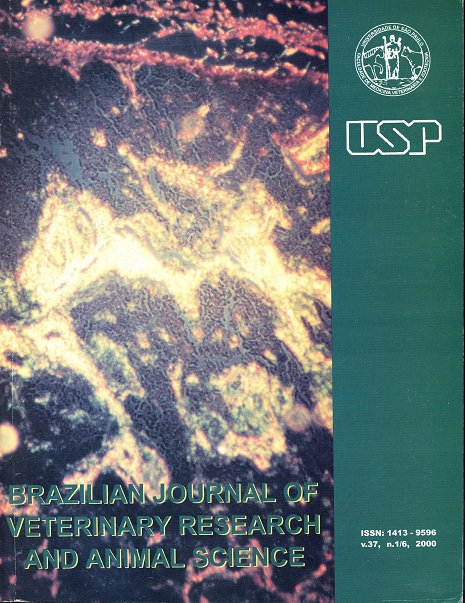The use of the sardine scale (Sardinella brasiliensis - STEIDACHNER, 1859), preserved in glicerine, in experimental lamellar keratoplasties in dogs
DOI:
https://doi.org/10.1590/S1413-95962000000100007Keywords:
Comea, Dogs, Scale, Comeal transplantation, SardinesAbstract
Sardine scales (Sardinella brasiliensis) were experimentally studied as a corneal substitute in keratectomy in dogs. For this purpose, fourteen healthy male and female mongrel dogs, with an average weight of ten kilograms, were used. The recipient corneas and the implanted material were examined macro- and microscopically at 1, 3, 7, 14, 30 and 60 postoperative days. The clinical evidence for the lamellar graft showed a higher incidence of photophobia and blepharospasm during the early and intermediate postoperative periods, tending to regress during later phases. The corneas showed a mild and equally regressive edema, a more proeminent neovascularization during the intermediate periods and rare neovascularization at the later ones. The microscopic study demonstrated a "benign pattern" of reaction signs. Moreover, both studies showed good adhesiveness of the "prosthesis", and neoformed epithelium and neoformed stroma beneath and above the prosthesis. The transparency of the recipient corneas close to the graft areas was maintained for fourteen days. For the interlamellar procedure, the phenomena showed an evident "benign pattern" with non-significant reaction signs. There were no signs of extrusion of the prosthesis. The sardine scale can be used with good results in lamellar keratoplasties in dogs for tectonic effects.Downloads
Download data is not yet available.
Downloads
Published
2000-01-01
Issue
Section
VETERINARY MEDICINE
License
The journal content is authorized under the Creative Commons BY-NC-SA license (summary of the license: https://
How to Cite
1.
Laus JL, Ferreira AL, Andrade AL de. The use of the sardine scale (Sardinella brasiliensis - STEIDACHNER, 1859), preserved in glicerine, in experimental lamellar keratoplasties in dogs. Braz. J. Vet. Res. Anim. Sci. [Internet]. 2000 Jan. 1 [cited 2024 Apr. 19];37(1):47-51. Available from: https://www.revistas.usp.br/bjvras/article/view/5847





